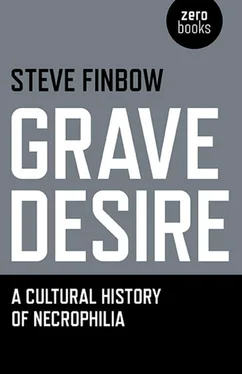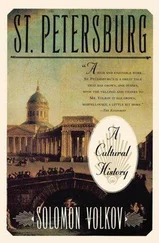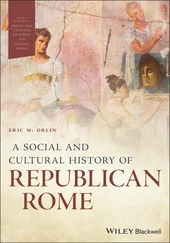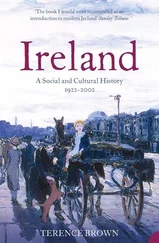Facts about Sergeant Bertrand’s life are sketchy but using medical and historical records, literature, art, and other case studies, this book hopes to flesh out an analysis of his mania. The details lead to a study of Bertrand and historical necrophiles: from Ancient Egypt, the Moche Civilization of northern Peru, and Herodotus to modern necrophiles such as Carl Tanzler, Gary Ridgway, Mark Dixie, Ted Bundy, and Dennis Nilsen. Charles Dickens, Guy de Maupassant, Joris-Karl Huysmans, Angela Carter, Colin Wilson, Cormac McCarthy, and J.G. Ballard have all written about necrophiles and/or necrophilia, and the necrophile plays a significant role in the Gothic tradition and in Surrealism. The ultimate transgressive act has interested writers from Homer, through the Marquis De Sade, Edgar Allan Poe, Oscar Wilde, and Charles Swinburne to contemporary novelists such as Poppy Z. Brite, Chuck Palahniuk, and Joyce Carol Oates. The image of the necrophile has inspired Aubrey Beardsley, Gustave Moreau, Salvador Dali, and Jean Benoît. Films as diverse as Re-Animator, Corpse Bride, Clerks, Weekend at Bernie’s and Katashi Miike’s Visitor Q have used necrophilia for dramatic or comedic purposes. Popular television series such as True Blood, Family Guy and Two and a Half Men have touched on the subject, while in CSI: NY’s second season, a plotline in the episode ‘Necrophilia Americana’, involved a woman’s body found surrounded by American carrion beetles (Necrophila americana), the only witness being a young boy who may or may not have interfered with the body. Japanese anime and manga feature many necrophiles or characters with necrophiliac tendencies. Using these as embedded interpretations in the text, the ‘art’ of necrophilia—in a necrophagic way, eating its body from the tail (tale) onward—provides a cultural response to the medico-legal aspects and psychological analysis of the men and women drawn to sex with dead bodies.
Dear Reader, I have now laid out her body on her bed—my soror mystica—Rebecca Vaughan, my life, my wife in her death. Here among the mercury fumes, the aqua regia, the potash and the lime, here where I dabble with ampulla and horn of Hermes, with dung bath and crucible, I think of her. No Satanic rites to raise the dead, no kabbalistic moulding of material from the spirit, but a Rosicrucian rebirth, the transmigration of her soul through sexual intercourse. I take my lamp and walk up the narrow steps to her chamber. I feel the vibration of her spirit, the coolness of her matter. I lift the veil, kiss her lips, and enter her house of light. ‘…it seems likely that our familiar perversions will soon come to an end, if only because their equivalents are too readily available in strange stair angles, in the mysterious eroticism of overpasses, in distortions of gesture and posture. As the logical fashion, such once popular perversions as paedophilia and sodomy will become derided clichés, as amusing as pottery ducks on suburban walls.’ [22] The Atrocity Exhibition, p. 120.
How have our philosophers, psychoanalysts, and cultural thinkers dealt with the question of necrophilia? Bertrand’s actions, and necrophilia in general, can be approached using the theories of psychoanalysts and philosophers such as Richard Krafft-Ebing, Sigmund Freud, Georges Bataille, Martin Heidegger, Jacques Lacan, Michel Foucault, Gilles Deleuze, Félix Guattari, and Slavoz Žižek. Throughout the book, I will use quotes—sometimes analytical, sometimes illustrative—from philosophy, psychoanalysis, and literature in an attempt to provide an analysis of necrophilia as revolt, as sickness, or as an extreme normality. ‘Violence is the conceptualization of pain. By the same token, psychopathology is the conceptual system of sex.’ [23] The Atrocity Exhibition, p. 117.
Reality or myth, perversion or human practice grounded in history and being—these are notes toward an ethics of necrophilia drawn from the dark desires of a nineteenth-century soldier whose acts of violence, corporal defilations, transcendent acts of disgust, bring into question the limits of desire, illuminating, as they do, the erotics of desecration, and a revolutionary view of human rationality. ‘[V]iolence, and all violence for that matter, reflects the neutral exploration of sensation that is taking place now, within sex as elsewhere, and the sense that the perversions are valuable precisely because they provide a readily accessible anthology of exploratory techniques.’ [24] The Atrocity Exhibition, p. 120.
As a twentieth-century necrophile, Mark Dixie may have put it in his quotidian terms, ‘I’d had some toot and a few pints, me and a few friends were celebrating in the Balmoral Castle. It was my 35 thbirthday. I was staying overnight at someone’s flat but went out at three in the morning to see what I could find. I saw a woman by the recreation grounds. I tried to pull her out of her car but some interfering van driver got involved so I shot off. All I got was her useless mobile. I saw another girl—long blonde hair, petite—arguing with her boyfriend. I waited and when she was alone, I stabbed her six or seven times. Bit her an’ all. She died right there in the drive. I unzipped and lifted her dress.’
How are these acts possible? Will a sexuality that stands opposed to the possibilities of society, in opposition to procreation, that sickens our minds, that has the potential to destroy life in its desire for death, be forever marginalized because of its degeneration? Should we consider this extreme act of individuation (although endemic in past cultures) a perversion or a representation of human divergence? After all, ‘This fundamental differenciation (quality-extensity) can find its reason only in the great synthesis of Memory which allows all the degrees of difference to coexist as degrees of relaxation and contraction, and rediscovers at the heart of duration the implicated order of that intensity which had been denounced provisionally and from without.’ [25] Gilles Deleuze, Difference and Repetition, p. 299.
Is there some place in our memory where necrophilia is a rite of passage? Somewhere to enact the ‘fundamental differenciation’ between life and death? An arena in which life ‘the heart of duration’ seeds death to help it on its way? Or is this sexual intensity, this coexistence of potential life with death, always to be denounced as dark and desperate? After all, as Ballard states, ‘…the sexual imagination is unlimited in scope and metaphoric power, and can never be successfully repressed.’ [26] The Atrocity Exhibition, p. 53.
2
Necrophilia—Deathinition
Necrophilia (love of the dead)—also called Thanatophilia—is one of the last great taboos of humankind. A paraphilia combining both Eros and Thanatos, necrophilia is a nihilistic act of procreation and an elevation of the corpse to a level of desire, it is an overstepping of traditional ethics and a re-evaluation of sexuality, it is foremost an intricate constituent of human history, religion, and culture: ‘[J]ust as I finished, I began to feel that icy screaming in one of my auricles, and my blood pumping it all over me until I understood the putrid green stench of that mindless decay…’ [27] William T. Vollmann, The Rainbow Stories (New York, 1989), p. 297.
So, what is necrophilia? The Compact Oxford English Dictionary defines it as: ‘necrophilia /nekrəfilliə/ • noun—sexual intercourse with or attraction towards a corpse.’ This compact description provides a basis for an examination of the term and its linguistic and legal definition. νεκρός (nekros) = ‘corpse’ or ‘dead’ and φιλία (philia) = ‘love’ or ‘friendship’, hence an artificial compound word derived from Ancient Greek meaning a love of the dead. The pioneer Belgian psychiatrist Dr Joseph Guislain neologized the word in 1860, but its meaning is closer to a ‘love of death’ or a ‘lust to create death’ rather than ‘a lover of the dead’. In 1874, W.A.F. Browne, once Commissioner for Lunacy in Scotland, used the term ‘necrophagy’ (eating of dead or decaying flesh). Alexis Epaulard in his paper ‘Vampirisme, Necrophilie, Necrosadisme, Necrophagie’ (1901), defined Necrosadism (sexual gratification from the mutilation of corpses). These terminologies often overlap and, in Bertrand’s case, they form part of a sexual trilogy in which necrophagy and necrosadism combine to create necrophilia: ‘When you put it that way, you would think that people would naturally prefer to be a sex object. After all, to say that your body becomes a waste object is to say that when you die you become excrement. The cadaver is a parody of you made out of shit. Who wants that? Wouldn’t it be better to be a sex object? [28] Supervert, Necrophilia Variations (USA, 2005), p. 1.
Merriam-Webster’s online dictionary defines necrophilia as an ‘obsession with and usually erotic interest in or stimulation by corpses’. This takes necrophilia out of the list of paraphilias and places it in the realm of obsession (a weaker form of fetishism). Being obsessed with corpses does not necessarily mean having sex with the dead. Goths wear skull rings and skeleton jewellery. Mexicans celebrate El Día de los Muertos (Day of the Dead) where one can buy candy skulls and skeleton dolls.
Читать дальше












